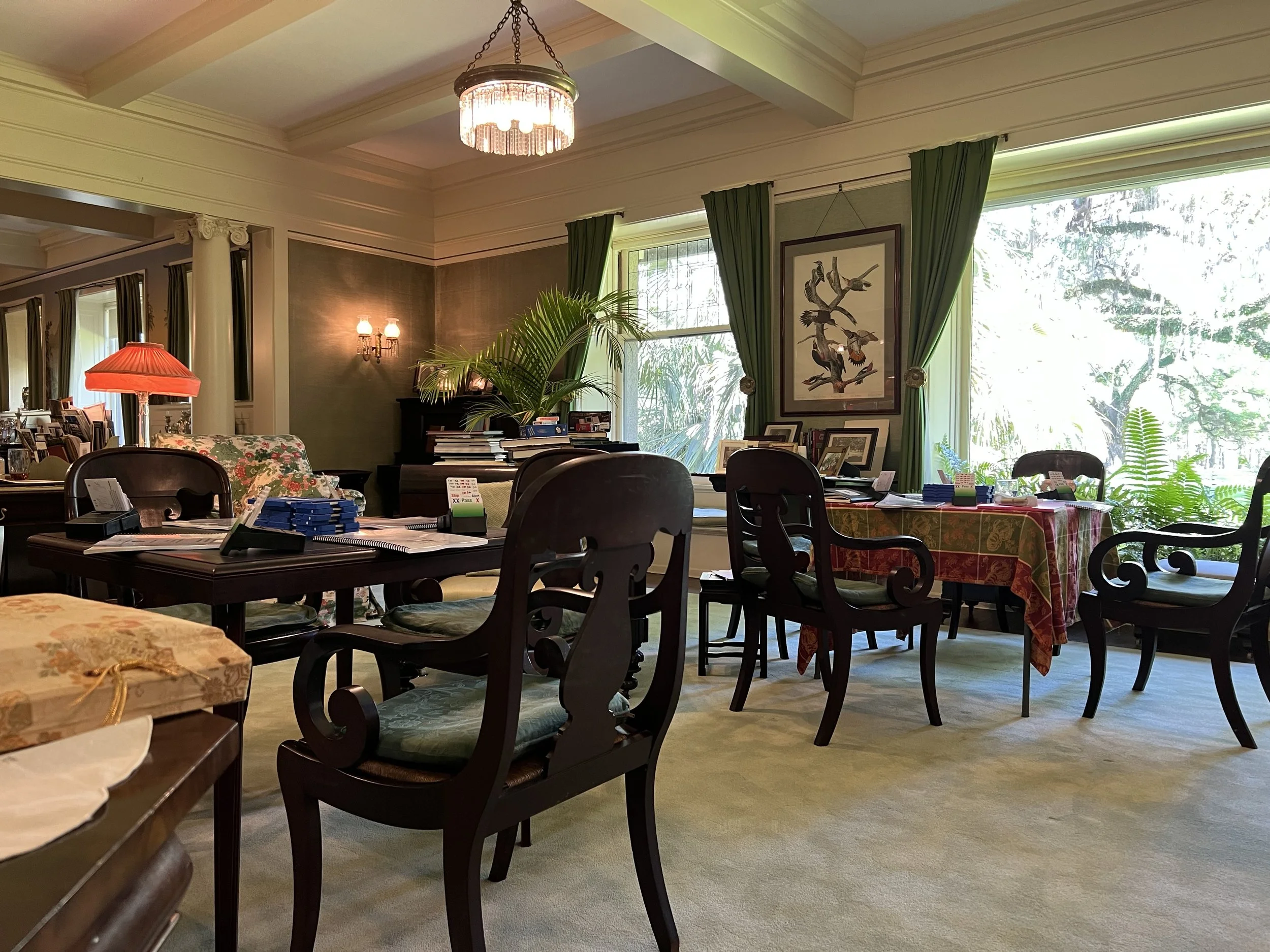This Week in Bridge
(420) Splinters in 2/1 GF Auctions
© AiB Robert S. Todd
Level: 7 of 10 (3 of 6) robert@advinbridge.com
General
Splinters are an important part of modern bidding. A splinter bid communicates a lot of information to partner in just one bid – fit, values, and shortness (ruffing values). The most common instance of a splinter is on Responder’s first bid. When responding to partner’s opening bid our bids show:
A shift to a new suit is natural – forcing for at least one round (depending on the level),
A jump shift is something special, but generally natural – sometimes weak, invitational, strong, or even other things,
A double jump shift is a splinter!
Example 1
1♠ __?
2♣ 2/1 Game Forcing, Natural and Forcing to game.
3♣* Jump Shift. This has many meanings based on partnership agreement, 3/1 Invitational being one of them.
4♣* Double Jump Shift, Splinter. This is GF, 4+card ♠ support, and 0-1 ♣.
Opener’s Splinters in 2/1 GF Auctions
When we are in a 2/1 GF auction, we know that both Opener and Responder have at least an opening hand. That means that we do not need to be able to show an “invitationally” valued hand. Thus, in a 2/1 GF auction we can make a splinter with a simple jump shift (not a double jump shift).
Example 2
1♠ 2♣
__?
2♦ Natural, 4+♦, unlimited values
3♦* Splinter, 4+♣, 0-1♦, unlimited values
These splinters in 2/1 GF auctions keep the auction lower and apply part of the principle of fast arrival – that good hands try to go slow. In Example 2, 2♦ is natural and unlimited in values (a shift), so we do not need another natural 3♦ bid. 3♦ is best used as a splinter, showing a fit for partner’s suit and shortness in ♦. This splinter in the middle of a 2/1 GF auction does not show significant extra values either - it just shows a hand we are not completely embarrassed to have opened. If our hand is horrible and we have a shape for a splinter, then we simply raise partner.
After a splinter, Responder is left with an excellent picture of Opener’s hand and is well placed to find the best game or explore slam.
Responder’s Splinters in 2/1 GF Auctions
Responder can also make a splinter in the middle of a 2/1 auction by making a simple jump shift after making a 2/1 GF bid. If this splinter is in support of a single suit (Opener bid and rebid the same suit) then it shows not enough trump to make a splinter on the first round of the auction.
Example 3
1♠ 2♣
2♠ 4♦
4♦ shows 3-card ♠, 0-1♦, and a good hand for slam - either extra values or decent controls. This is not a hand that we are ashamed to have game forced. With that hand, we just bid 4♠.
If the Opener shows a second suit, then Responder can splinter in support of Opener’s second suit.
Example 4
1♠ 2♣
2♥ 4♦
4♦ shows 4-card ♥, 0-1♦, and a good hand for slam – either extra values or decent controls. This is not a hand that we are ashamed to have game forced. With that hand, we just bid 4♥.
Conclusion
Splinters are some of the best tools for bidding low HCP slams and for staying out of bad slams. There are traditional splinter auctions that show a big fit, values, and shortness. But there are many other auctions where we may want to employ splinters to allow us to re-evaluate our hand. In 2/1 GF auctions we have already shown our values. That means we can use a splinter as only a single jump shift, preserving more bidding space. Keep an eye out for an opportunity to make these very descriptive bids that allow us to try for slam and describe our hand to partner relatively cheaply.

